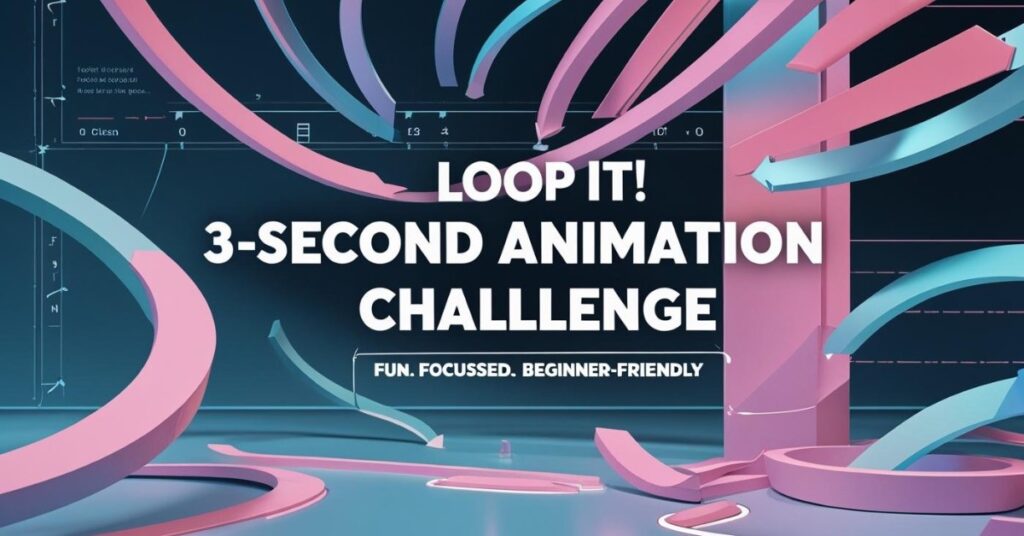Why 3 Seconds?
Three seconds might not sound like much—but in animation, it’s the perfect bite-sized project. At 24 frames per second, that’s just 72 frames. Small enough to not feel overwhelming, but long enough to tell a tiny story or explore a visual idea.
What Is the 3-Second Loop Challenge?
This simple exercise asks one thing:
Make a looping animation that lasts exactly 3 seconds.
It can be abstract. It can be funny. It can be a bouncing ball, a waving hand, a blinking eye—whatever idea keeps your creative engine running. The key is repetition and rhythm. When done right, your final loop will play seamlessly, repeating forever without any hard cuts or awkward breaks.
How to Get Started
- Choose Your Tool: Any beginner-friendly app will do—try FlipaClip, Krita, or even RoughAnimator.
- Decide on a Concept: Think small and looping. Here are some fun starter prompts:
- A blinking cat
- A walking cycle
- Flickering candle flame
- Ball bouncing off invisible walls
- Storyboard It (Very Loosely): Sketch a rough idea of how it begins and ends—remember, the end must lead smoothly back into the beginning.
- Animate Your Frames: Keep it simple. Even stick figures are fine. What matters is motion and clarity.
- Preview and Polish: Watch it loop. Make sure the last frame blends with the first. Tweak until it feels satisfying!
What You’ll Gain
- Confidence: Finishing a short animation feels good. Really good.
- Clarity: You’ll improve your sense of timing and spacing.
- Creativity: Repetition opens doors to playful experimentation. Try weird ideas. Push them.
- Consistency: You’ll practice frame-by-frame skills without a long-term commitment.

Beginner-Friendly Tips
- Use onion skinning to line things up easily.
- Keep it short and bold. It’s okay if it’s not perfect—aim for fun and flow.
- Watch existing loops on Instagram or YouTube for inspiration—search for “3-second animation loop.”
Make It a Habit
Want to build real momentum? Try making one 3-second loop a week for a month. Call it your “Mini Motion Journal.” You’ll be amazed by your growth after just four loops.
You Don’t Need to Be ‘Good’
You just need to be curious and willing to try. These tiny loops are about play, not perfection.

Try It, Tag It, Share It
If you create a 3-second loop and feel proud, share it! Tag it with #3SecondLoopChallenge and join others who are exploring motion, one loop at a time.
You never know what doors a tiny animation might open.


























